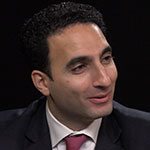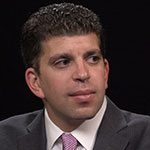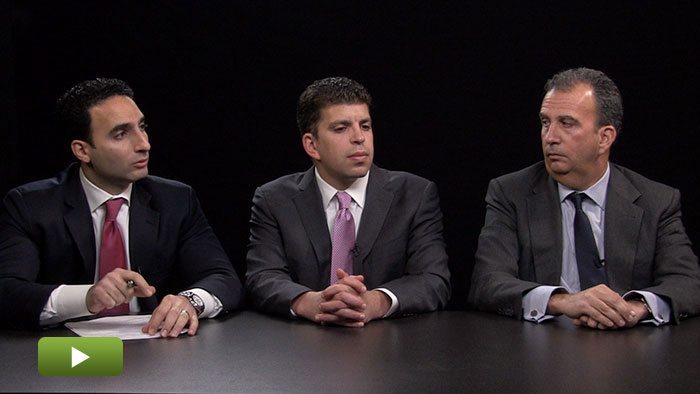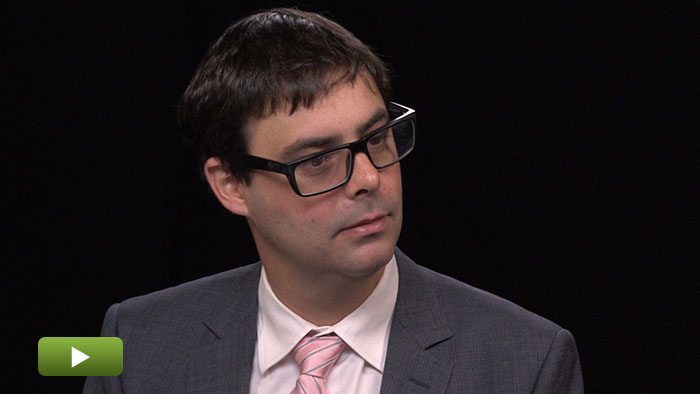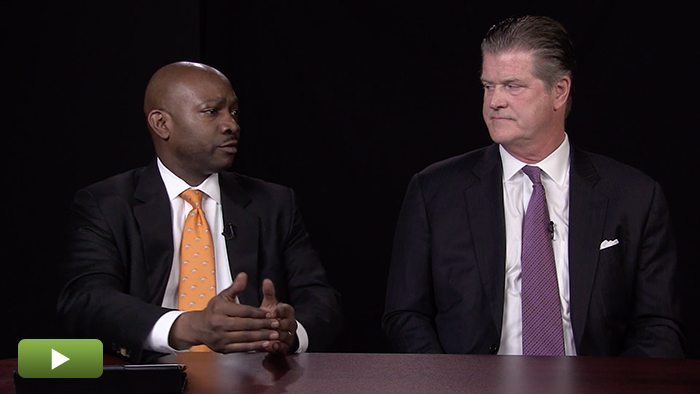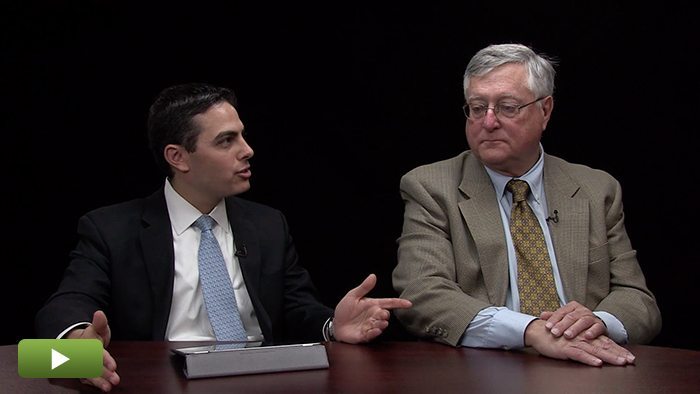The State of Market Terms for Fees
An important part of the discussion between GPs and LPs in fund formation is around fees. Experts from Gen II Fund Services, Credit Suisse, and Kirkland & Ellis discuss where certain fees sit at the moment, where there might be points of negotiation, how the growing expense of being a GP is impacting fees, shifts in waterfall carry distribution styles, and what incentives are being offered to cornerstone investors.
Transcript Download Transcript
The State of Market Terms for Fees
Private Equity Fund Formation
David Snow, Privcap: Today, we’re joined by Raed Elkhatib of Credit Suisse Private Fund Group, Robert Blaustein of Kirkland & Ellis, and Steven Millner of Gen II Fund Services. Gentlemen, welcome to Privcap. Thanks for being here.
We’re talking about the state of the market for fees. Why don’t we start with an overview? Raed, you advise clients on fundraising. Tell me what are some of the most important fees now. What do they look like and what are the market terms?
Raed Elkhatib, Credit Suisse Private Fund Group: Sure, if we think they fall outside of management fees, we call this kind of fee paradigm; they are a pretty well defined set of fees that GPs can charge and generate ancillary income. These would include transaction fees, monitoring fees and things of that nature. Importantly, these have been offset against management fees. Today, it’s probably about 100% the most common circumstance. But years ago, it was undefined and this was an important source of income for general partners. But it started to become 50/50 offset probably eight to 10 years ago, over time 80/20 offset—80% of any income offset against the management fees.
Snow: Those are the deal fees, transaction fees. Rob, any movement or interesting points of negotiation within that set of fees that you’ve seen lately?
Robert Blaustein, Kirkland & Ellis LLP: Yeah. As Raed mentioned, the trend is definitely toward 100%. You’re seeing exceptions where the sponsor has performance that supports the economics they’re going to push for. For smaller funds and even some midsize funds, it’s actually a pretty significant source of income. As you see discussions and pressure on fees or delays in the waterfall distributions, this real-time income is very helpful to sponsors in competing for talent and making sure you can pay bonuses to people out of the carry.
Snow: In what circumstances do GPs actually not go 100% offset to the LPs? Are there special circumstances that allow them to ask for a bit more of the fees?
Steven Millner, Gen II Fund Services: Rob actually raised the right point—when you go past the large-tier, private equity funds get more into the middle market. There is much more compression on the manager, the sponsors and P & L than there was before. Having said that, when we look at the clients, we did a survey about six months ago and looked at 20 or 25 clients that were in the market raising money. And I think all but one were 100% offset, so the market, the GP/LP dynamic and that negotiation is largely driving what the fee offsets look like.
Snow: Talk about the expense involved in being a private equity firm and what it looks like now, especially for smaller and medium-sized managers. Are they hitting the spending caps they originally thought they’d hit? Is there a need to actually find new sources of revenue to keep their operations going?
Millner: Post-regulation—once, as you know, private equity firms needed to register the cost associated with running a private equity fund went up. They went up because of the legal costs, the compliance costs and now ancillary-type costs. Those costs range from dealing with cyber security—the limited partners have become more sophisticated and, as a result, are requesting more information. Surveys were done by some of the big four accounting firms recently that evidence across the board that GPs are finding that LPs are requesting much more information from them more frequently and more detailed. All of this is affecting how the sponsor basically is resourcing the opportunity.
Clearly, folks like us at Gen II are now a beneficiary in terms of how people look at resourcing and outsourcing; administration has really grown the private equity asset class over the last [few] years. We think that, in part, it’s new to the cost structure associated with private equity funds.
Blaustein: There are some back-office administrative costs that certainly have ballooned over time. There is also a greater expectation from investors and from limited partners that GPs do more to add value. I think the days of leverage driving returns are long past us. So there are operating talents, larger teams and more complicated sourcing mechanisms within these firms that drive up the cost of running a partnership.
Elkhatib: We’re also seeing a big expansion in the number of people in the back office in addition to service providers like Gen II. You’re seeing groups that used to have a CFO handling the financial reporting portfolio companies’ financials, investor reporting, dealing with a pseudo legal function. You’re seeing general councils, comptrollers and other assistant CFO positions. So, in the back-office side of it, a lot of it is driven by LP ongoing diligence once you’re in the fund—questions, customized reporting.
Snow: On the one hand, you have pressure on fees across the board on GPs, but on the other hand, you have the rising expense of being a GP. How is this playing out in the negotiation for fees? Where are GPs able to argue convincingly that they need and should have access to different sources of revenue?
Elkhatib: I think that’s important because when you make that argument, in some cases, LPs are requiring you to build up a budget. Actually prove to me that if you’re a $200-million or $250-million fund, you require additional fees to operate your business? Well, put it on a piece of paper and prove it to me. I think you’re seeing more of that and that’s the caveat to these smaller firms who are getting instead of 100% offset, some are still 50/50 or 65/35, some adjusted mechanism. Sometimes it’s above a certain hurdle, so you can have half a million or a million—some expense level per year. Again, prove it. Help me understand what the cost of running your business is and I’ll be okay supporting that.
Millner: I think the other basic thing you’ve got going on is if you look just at the basic management fee (forget the offsets for a minute), 2% in some cases is still okay. It seems to me that when I look at clients, there is a correlation between the size of the management fee and the size of the fund. The bigger funds are taking a bit more of a haircut. So, you can see 150 bps on, let’s say, a $100-billion fund, where you might see 200 bps at a $500-million fund. So that’s where some of the economics come back to the smaller sponsors to be able to absorb some of these costs. That’s one of the mechanisms.
Snow:Let’s talk briefly about another important term: the waterfall to paint with broad-brush strokes. You’ve got the American style, which is more a deal-by-deal carry. Then, you’ve got the European style, which is that carry kicks in after LPs get all their principal back. Steve, you have some interesting insights into the breakdown between the number of funds that adopt a U.S. versus European style of waterfall carry distribution.
Millner: We were surprised to look at this. We did a survey again—we look at 20 recent clients, 25 funds in the market, varying sizes, $150 million on the small side, about $2 billion on the large side. And we looked at basically the waterfall model and this surprised me. We found that 60% still do deal-by-deal, (i.e., an American style waterfall). But 40%—it surprised me how high that was—actually went to a European style or total fund waterfall. That’s a change that’s occurred in the market over the last couple of years where we predominantly had deal by deal.
Blaustein: Steve, these are U.S.-based managers you’re referring to?
Millner: In almost all cases they’re U.S. based, yes.
Blaustein: Because I always found that an interesting anomaly in the market. If you have the same exact firm based on London or New York, the acceptability of this back-ended European waterfall versus American waterfall varies.
Millner: Yes, you’re right about that.
Elkhatib: It’s definitely heading in that direction. The other thing you’re seeing is in U.S.-based managers—if they’re flipping to a model there is something in the middle. There is a back-ended, co-modified waterfall where you return with perhaps all fees and expenses before we’re getting into a deal-by-deal model. So you’re seeing LPs be more cognizant of this issue and coming up with ways to alter the landscape.
Blaustein: Yeah, there does seem to be a focus on not so much the absolute dollars but making sure that the GP is not getting ahead on carry that they’re ultimately going to have to give back. From 2008 to 2010–11 into 2012, you saw an over-shifting or just a massive shift in the balance of negotiating leverage to the LP’s side. And sponsors were pretty much willing to live with whatever they needed to do to get a fund raised if they were able to. You’re now seeing the first generation of funds that are being raised as successors to funds being raised in those times. And you’re seeing sponsors face a decision of if they move, are they going to try and recapture some ground?
Snow: Let’s talk briefly about cornerstone investors. I keep hearing in today’s market that there are incentives being offered to certain LPs who, in many cases, come into a fund early or come in with a very large anchor commitment. What kinds of terms and conditions or breaks might those kinds of investors expect to receive at the negotiating table?
Blaustein: Yeah, it’s funny. There are really two angles on this. The first one is almost GP driven and the second is the traditional you think about—we’re the anchor and we’re going to be the foot in the door they raise the funds off of. Sometimes sponsors will decide whether there is a benefit to being in early or for loyalty or something like that. There are a lot of LPs out there that do this as a business model, in which they say, “We’re going to find sponsors that nobody else finds and nobody else is competing with. And for doing that and putting these guys in business, we want some discount.” It’s really very LP specific.
Elkhatib: Yeah, but it’s taken all shapes and forms but it’s the key to fundraising success in this market and we’ve got a relatively robust fundraising market over the last two years. It still remains there are over 2,000 funds in the market. The key to success is momentum and how you get that momentum. LPs realize that the ones with scale who can present checks with $100 million to get somebody started—there is a lot of value to that and GPs are willing to concede on terms to get that capital.
Millner: I agree with what’s being said; again, within that survey, 15 funds we took on in the last 18 months were new sponsors. [These were] sponsors that either had spun out of a larger organization or what have you. They hadn’t had a past fund as a new organization and when you look at success of fundraising, you will see the cornerstone as an important catalyst to getting the momentum going, to providing credibility and capital to the team during the fundraising period. And, in every case we’ve seen a cornerstone come in with a meaningful amount, the fund has either met or exceeded its fundraising target.
Snow: In your observations, what have been the most important incentives to get those cornerstone investors in place and at the right momentum?
Millner: I think it’s largely strategic and it’s GP by GP (i.e., cornerstone by cornerstone). We’re seeing more and more folks doing this as a business. This is part of their business model to secure co-investment opportunities or to get a bigger seat at the table. There is some discussion in the marketplace about large LPs going direct and not going through a traditional sponsor. This is the middle ground where they can have a big piece of a professional organization—they get to see the deals, but they have resources and expertise of a GP sponsor at hand.
Elkhatib: Along the same thought process that one option is as a large strategic cornerstone investor, the other option is a relatively recent phenomena, is incentivizing a whole group of LPs, again, to drive momentum. If it’s taking on average 16 to 18 months to raise a fund, how do you drive to a first close? How do you build that momentum? That’s one option; the other option is the early bird discount.
Snow: Let me ask one final question to the three of you. It’s a bit of a crystal ball question that has to do with the current state and the future of the almost wholly sacrosanct combination of 80% preferred return and 20% carry. Is that here forever?
Blaustein: Yeah. It’s funny, because 8% is more or less the number used by a lot of pension funds for when they target their budgets and look at if they’re going to meet their long-term expectations. Historically, it came into being an 8% because it was the risk-free rate of return when a lot of these funds originally launched. So, I do think it’s well rooted. I’ve seen trade-offs for premium carry and things like that in some cases. And you do what you can to get a fundraiser. I’ve seen cornerstone investors pay full freight but ask for a hurdle increase.
Millner: On the 8%, we see it almost as sacrosanct. There is some modification between what’s called a “hard hurdle” and a “soft hurdle” where you can bifurcate basically when the GP starts getting made whole over the hurdle. But, essentially, when we look across the board, 8% is very consistent. We do see some shifting to Raed’s point really on the incentive, so 20% not locked in, especially for certain strategies (i.e., credit) where you’re seeing a lower return expectation.
David, the other thing we’re starting to see—which is interesting slipping into the discussion—is the GP catch-up. With the GP catch-up, we see 100%, we see 80/20, now we’re starting to see 50/50. So, when you look at the GP catch-up and you look at the hurdle rate. People say, “My hurdle rate is 8%; once I get eight, I get twenty.” No, once you get eight and you have a 50/50 hurdle rate, you need about a 15% return before you actually get to a full 20% carry. So, the GP catch-up is another mechanism to govern the relationship between the LP and the GP.
